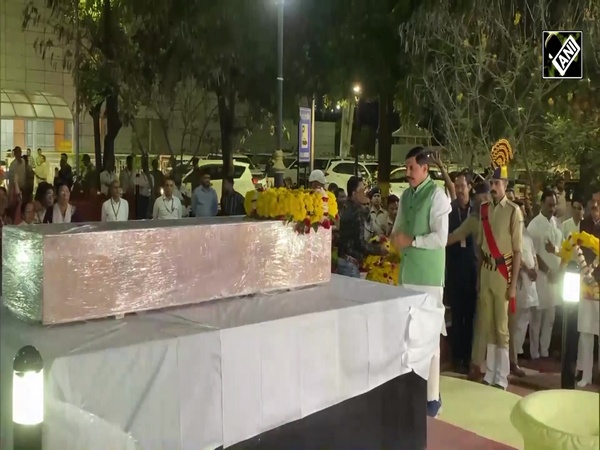See the World Clearly with Laser Refractive Surgery - A Guide to Life Beyond Glasses
Apr 24, 2025

PNN
Bhubneswar (Odisha) [India], April 24: Laser refractive surgery has transformed the lives of millions by eliminating the need for glasses or contact lenses. This advanced procedure reshapes the cornea using laser technology, effectively correcting common vision problems such as myopia (nearsightedness), hypermetropia (farsightedness), and astigmatism.
Who is Eligible for Laser Refractive Surgery?
* Not everyone is a candidate. Ideal patients usually meet the following criteria:
* 18 years and above for cornea-based laser vision correction (LVC)
* 21 years and above for phakic intraocular lenses (IOLs)
* Stable vision for at least 6 months
* Adequate corneal thickness and normal topography scan
* Absence of secondary ocular pathology such as retinal diseases, uveitis, glaucoma, endothelial dystrophy, or cataracts
* Not planning pregnancy in the next 6 months
* Not on certain medications (such as oral contraceptive pills)
Why Consider Laser Eye Surgery?
Some of the key benefits include:
* Improved vision -- 20/25 or better in most cases
* Reduced dependence on glasses or lenses
* Quick recovery time and minimal discomfort
Types of Laser Refractive Surgeries
Your ophthalmologist will recommend the most suitable procedure for you:
LASIK (Laser-Assisted in Situ Keratomileusis): A corneal flap is created, the underlying tissue reshaped with a laser, and the flap repositioned. This allows for rapid healing and comfort.
PRK (Photorefractive Keratectomy): No flap is created. Instead, the outer corneal layer is removed before laser reshaping. The layer regrows naturally.
SMILE (Small Incision Lenticule Extraction): A minimally invasive technique where a small tissue disc is removed through a tiny incision, without creating a flap.
Phakic Intraocular Lens or Clear Lens Exchange: Recommended for those with high refractive errors or unsuitable corneas for laser treatment.
What Are the Risks?
* Like all surgeries, laser refractive procedures carry potential risks, including:
* Dry eyes
* Glare or halos
* Undercorrection or overcorrection
Rare infections
Despite these, long-term studies affirm the safety and effectiveness of these procedures when done on suitable candidates.
Debunking Common Myths
1. It's painful
* Not true. Anesthetic drops are used, and patients typically feel only mild pressure.
2. It's a new, experimental technique
* False. LASIK has been in use for over three decades, with millions of success stories.
3. The laser can misfire if you move your eye
* Modern laser systems feature real-time eye tracking and pause if necessary.
4. You'll never need glasses again
* Mostly true for distance vision, but reading glasses will be needed after 40 years of age due to natural aging (presbyopia).
5. You get perfect vision instantly
* Vision improves gradually. Most patients see 95% recovery in one week, with full results in about a month.
6. It's suitable for everyone
* Not all eyes are eligible. A thorough evaluation by your ophthalmologist is essential.
Final Thoughts
"Laser refractive surgery is not a one-size-fits-all solution. When a thorough eye evaluation is done to determine the right procedure for each individual, it offers excellent results with high satisfaction rates. Make sure you consult an experienced ophthalmologist," advises Dr. Sohini Mandal, Ophthalmologist at LVPEI, MTC Campus, Bhubaneswar.
If you're considering saying goodbye to glasses, start by booking a comprehensive eye evaluation with a certified specialist. Your journey to clearer vision could be just a laser beam away.
(ADVERTORIAL DISCLAIMER: The above press release has been provided by PNN. ANI will not be responsible in any way for the content of the same)




















